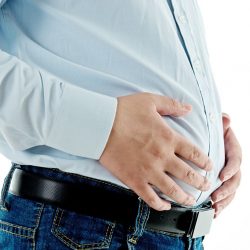Anorexia seems to have existed since the dawn of time. Whether it’s because of religion, health reasons, an obsessive concern about putting on weight, a hormonal dysfunction or something else, people lose their lives by literally starving themselves to death, even though they lack nothing.
For a very long time we attributed anorexia or bulimia to a kind of young girl’s mania about not wanting to put on weight, but today we know that the problem is much more important than just looking like a very thin female ideal.
Who is most affected by anorexia?
We know, for example, that anorexia does not mainly affect girls. Indeed, boys are sometimes affected by anorexia or bulimia.
There are also genetic reasons for hereditary problems: half of identical twins will suffer from anorexia together, compared with 10% of identical twins.
Families where the image of the girl has to be perfect, slim, organised, overly clean… can contribute to the development of this disease. This is all the more true when there are also problems of divorce, parental conflict and sometimes even domestic violence.
If, in addition, the person is unable to express their emotions and feelings, and keeps their unhappiness deep inside them, it is highly likely that this behaviour will lead to depression and phases of anorexia nervosa.
Does anorexia also affect men?
Specific features and differences
Traditionally perceived as a predominantly female disorder, anorexia in men is often misunderstood and under-diagnosed. Yet men account for a significant proportion of cases of anorexia, with specific features arising from their experience and condition. Unlike women, where the desire to lose weight is frequently motivated by ideals of beauty, anorexia in men may be more closely linked to losing weight as part of a sporting activity or to achieving a muscular, athletic body.
This difference in motivation often leads to a different manifestation of the disorder. Men are more likely to associate anorexia with excessive physical activity, seeking a defined body rather than just a slim one. In addition, social stigma and gender stereotypes can make it more difficult for men to recognise their eating disorders and seek help. Indeed, anorexia is often seen as a ‘female’ problem, which can lead to feelings of shame or denial among men.
Recognition and treatment
Recognition of anorexia in men is a major challenge. Healthcare professionals need to be aware of the specific signs of this disorder in men, such as an obsession with a muscular body and extremely controlled eating, often under the guise of health or sport. It is essential to approach these issues with a nuanced understanding, avoiding gender bias.
Treatment must be tailored to their specific needs. Therapeutic interventions should address not only the dietary and physical aspects, but also the underlying psychological factors such as self-esteem, social pressures and gender stereotypes. Behavioural therapy, cognitive behavioural therapy and sometimes medication can be essential components of treatment. In addition, peer support and family involvement are crucial to effective recovery.
It is vital to raise awareness of male anorexia among the public and healthcare professionals, in order to promote early recognition and equitable access to care. Breaking down taboos and educating about this reality can help men with anorexia to seek and receive the support they need to recover.
The complexity of eating disorders
We think we know everything about this subject, but in reality we know nothing and know exactly everything there is to know. People with anorexia suffer. Anxious about putting on weight, they want to control their body, the food they eat and everything that disturbs them.
They don’t feel ill, and reject the illness and the consequences of their behaviour. She no longer eats easily, and tries to lose weight by taking laxatives and diuretics.
When the body is put to the test
Daily fasting disrupts her hormonal secretions, unless they are already out of whack, causing anorexia.
The girl no longer menstruates, and it’s a vicious circle. No more periods means less secretion of certain hormones and higher levels of opiates in the body.
A certain addiction is felt. The body demands not to eat in order to get its dose of opiates.
The circle closes and anorexia kills.
Consequences of anorexia
Impact on physical health
Anorexia has multiple consequences for physical health. Among the most serious effects are severe undernutrition and extreme weight loss, often leading to nutritional deficiency. This affects many of the body’s systems, leading to complications such as osteoporosis, due to low bone density, and heart problems resulting from reduced heart muscle mass.
People with anorexia may also suffer from chronic fatigue,low blood pressure, bradycardia (slow heart rate), and intolerance to cold due to the loss of the insulating layer of body fat. Fertility can also be affected, with complications such as amenorrhoea in women, i.e. the absence of periods, and a drop in libido or sexual dysfunction in men.
Psychological consequences
The psychological consequences of anorexia are as devastating as the physical effects. The condition is often associated with severe depression,anxiety and a sense of loss of control. Patients may also experience obsessive-compulsive disorders related to food and exercise, as well as distorted body image, seeing themselves as overweight even when severely underweight.
Anorexia can also lead to social isolation, with individuals withdrawing from their social and professional lives, often to hide their disorder or because of a lack of energy due to under-eating. This can lead to a vicious circle in which isolation worsens psychological symptoms, which in turn intensify anorexic behaviour.
Long-term effects
The long-term effects of anorexia can be extremely serious, even fatal. In addition to the chronic health problems already mentioned, anorexia sufferers are at increased risk of serious medical complications, such as organ failure, and have a higher mortality rate than the general population. What’s more, even after regaining their weight, certain effects, such as bone problems or endocrine dysfunction, can persist.
An integrative approach to treating anorexia
It is essential that we consider this illness and do everything we can to help the person concerned.
Parents, friends, relatives, doctors, psychiatrists and nurses… we all need to take action to improve the lives of our anorexic children or friends.
Treating anorexia with natural treatments may not seem enough. It’s better to adopt an integrative approach, involving a range of specialists in the care of people with anorexia.
This means referring the person to a doctor and, if necessary, a multidisciplinary team. Once the treatment has been put in place, which may involve taking medication, therapeutic monitoring and treatment by a nutritionist, there is nothing to stop the patient consulting a naturopath, a relaxation therapist, an acupuncturist or other therapist, to facilitate recovery.
The role of nutrition in treating anorexia
Nutrition plays a crucial role in the treatment of anorexia. Not only does it aim to restore a healthy body weight, but it also contributes significantly to the patient’s overall recovery. The renutrition process is delicate and must be managed with great expertise to avoid complications such as refeeding syndrome.
Restoring nutritional balance
The first objective is to restore nutritional balance. This often involves a diet specifically designed to gradually increase calorie intake, ensuring that the patient receives a balanced range of essential nutrients: proteins, carbohydrates, fats, vitamins and minerals. This step is crucial in countering the effects of undernutrition, such as muscle weakness, fatigue and bone problems.
Personalised dietary management
Personalised dietary management is essential. Each patient with an eating disorder has specific needs, and the nutritional plan must take account of these individual differences. Dieticians play a major role in designing and monitoring these plans, not only ensuring appropriate calorie intake but also helping to re-establish a healthy relationship with food.
Nutritional education
Nutritional education is another important aspect. Patients need to learn to understand their nutritional needs and recognise healthy eating behaviours. This includes knowledge of food groups, the importance of a varied diet, and an understanding of the impact of food on the body and mind.
Managing psychological problems linked to food
It is also crucial to address psychological problems linked to food, such as the fear of gaining weight or erroneous beliefs about certain foods. This often requires joint work with psychologists or therapists specialising in eating disorders.
Long-term follow-up
Finally, long-term follow-up is necessary to ensure that healthy eating habits are maintained and that the patient continues to make progress towards recovery. This may include regular consultations with nutrition professionals, as well as ongoing support from family and friends.
Some dietary changes to adopt
As part of the treatment for anorexia, adopting certain dietary changes may prove beneficial in restoring nutritional balance. It is important to stress that these changes must always be supervised by healthcare professionals.
Spirulina for enhanced nutrition
Spirulina is renowned for its nutritional richness, particularly in proteins, vitamins and minerals. It can play an important role in renutrition by providing essential nutrients in a concentrated form, which is particularly useful for people who have difficulty consuming large quantities of food.
Omega-3 for better absorption
Omega-3 fatty acids, found in oily fish, flaxseed and walnuts, are essential for brain function and heart health. They also help with the absorption of nutrients and can improve hormonal balance, which is crucial for anorexia sufferers.
Magnesium to correct imbalances
Magnesium plays a crucial role in many biological processes.Hypomagnesaemia, or low magnesium levels, is common in people with eating disorders. Magnesium supplementation can help correct this abnormality and improve muscle and nerve function.
Restoring a suitable diet
Above all, it is vital to re-establish a balanced diet. Confronted with anorexics’ refusal to eat, particularly high-calorie foods, carers need to adopt a gradual, empathetic approach.
Fibre-rich foods
Including fibre-rich foods, such as fruit and vegetables, can facilitate the renutrition process by aiding digestion and providing essential nutrients.
Use of detoxifying plants
Plants such as milk thistle and dandelion can be used for their detoxifying potential. However, their use must be supervised by a professional, as phytotherapy does not replace traditional medical treatment.
Avoid processed foods
It is advisable to avoid refined sugars, white flours and food additives such as preservatives and colourings. These products can upset the nutritional balance and are not conducive to the rehabilitation of a healthy diet.
Can acupuncture help people with eating disorders?
Acupuncture is a form of traditional Chinese medicine. Basically, an acupuncturist uses sterile needles on specific points on the body. The aim is to improve general health.
In a 2014 study, participants suffering from anorexia nervosa received either acupuncture or acupressure sessions twice a week for three weeks. Then once a week for a further three weeks. In summary, the participants found that after trying acupuncture, their preoccupation with food decreased. In addition, they felt a sense of relaxation throughout the treatment.
Older research suggests that integrating several acupuncture sessions with existing treatments for eating disorders can significantly improve the situation:
- anxiety symptoms are reduced
- improved mental health
- reduced feelings of perfectionism
- improved quality of life
Source:
- https://pubmed.ncbi.nlm.nih.gov/24102480/
- https://pubmed.ncbi.nlm.nih.gov/26970732/
- https://www.ncbi.nlm.nih.gov/pmc/articles/PMC2861069/
- https://pubmed.ncbi.nlm.nih.gov/15656021/
- https://www.sciencedirect.com/science/article/pii/S0033318288723622





